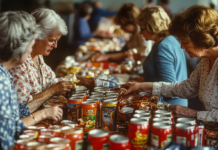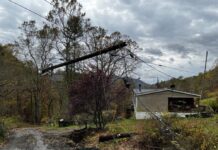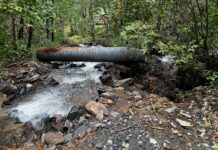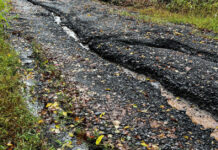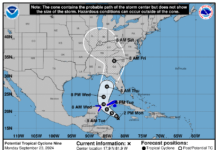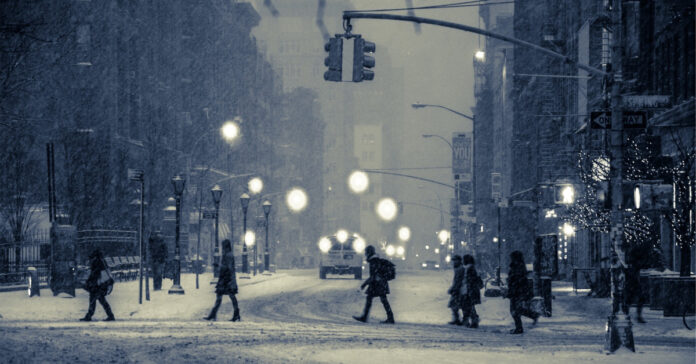
I’d like to know how the United States became a country where cold weather could threaten the power grid.
I get it that high winds, falling trees, and other weather-related damage can cut off power, but that has nothing to do with it. In the Boston area, officials are warning of power outages because too many people turn on their electric space heaters and fireplaces, increased demand beyond their generation ability.
The entire New England area, across the Midwest and into Minnesota and the Dakotas experienced single digit temperatures Monday night with even worse wind chills. The cold will continue into the week.
First, let’s remember that the recent Bronx apartment building fire was started by a faulty space heater. You may be safer using an electric blanket. Also, have people not heard of dressing warmly?
Second, I’m old enough to remember when fireplaces burned wood. An electric fireplace? Please.
Third, when did we become a country that could not produce enough electricity to keep its citizens warm? It’s just another example of our steady downward slide towards becoming a third-world nation.
Fourth, what will happen when all the electric cars get plugged in? Will people have to choose between using their furnace or recharging their car? Give me fossil fuels any day.
It’s Green Energy’s Fault
I am not against saving the environment, but I am against destroying our infrastructure and systems that work in an effort to protect the environment. If you want to close the coal plants, then let’s build more nuclear power plants. They don’t produce any CO2 and they’ll produce plenty of electricity. The whole green power generation plan is doomed if we don’t have better, cheaper batteries.
I wish the president was less concerned about leading the world in cutting greenhouse gasses and more concerned about improving our global competitiveness, economic position, and ability to project military might. While it is doubtful that we can achieve these green reduction targets, there is no doubt they will come at great expense and caused significant economic damage to the United States and our institutions.
Keeping Warm
I have lived in three very cold locations, one of which was quite close to the Canadian border and one of which received lake effect snow. (If you don’t know what lake effect snow is, it means the area got more snow than surrounding areas.) I’m talking about places where it’s so cold you have to plug your car when you park or it won’t start. Never did I worry about freezing to death. With proper planning, you can stay warm no matter what the temps are.
Here’s what I think is happening: People who live in houses with garages never have to go outside when it’s cold. They jump into their car while in their garage and they drive off to their destination. Once they get there, they park and scuttle inside. When it’s time to leave, they pull up their app and remotely start their car, so it’s nice and warm by the time they get inside it. Their total exposure to outdoor air is probably 40 seconds each way. As a result, these people never learned how to dress warmly. They don’t have warm clothes. They don’t know they need to put on a hat and then wear their hood over it.
Then there are the guys who want to wear shorts every day of the year and gals who want to wear thin yoga pants no matter how cold it is. You can’t do that when it’s in the teens, although those yoga pants might make a good inner layer, depending on what they are made of.
Shelter, it’s Part of the Triad
Preppers always talk about food, water and shelter, but they spend most of their time on the first two.
Clothing is a critical part of shelter. You need clothing for heavy rain and you need clothing for cold weather. In cold weather, I use this system for layering up:
Feet: Two pairs of socks, thinner inside thicker sock on the outside. At least one should be wool. Good boots are imperative. Good winter boots are high, waterproof, insulated and have a tread. If the snow is deep, add a pair of gaiters.
Legs: Thermals, usually merino wool. Then pants. Outside is a pair of snow pants. Depending on the weather, these can be a shell, an insulated shell, or a pair of bib overalls. A snow mobile suit would also work.
Upper Body: Thermal shirt, tucked into the thermal pants. Long sleeve shirt. Wool sweater, fleece-lined sweatshirt, or other intermediate layer. Outer layer is a parka which may incorporate multiple layers. Parkas are better than jackets in cold or snowy weather because they are longer and protect your butt when you sit down. They also have hoods.
Head: I often wear a knit cap and pull the hood over it. I also have hats with those long flaps that unfold from the top to cover your ears. They are old fashioned, but they are warm. For extreme cold, especially if there is high wind or you are on a snow machine, I wear a balaclava or facemask. On most days, sunglasses will suffice, but when there is blowing snow, sports goggles are important. I like neck gaiters, but some prefer scarves to keep their neck warm.
Hands: I like to carry two pairs of gloves or mittens. One is a big, heavy pair designed for maximum warmth. The other is a thinner pair designed to allow you to work and manipulate things with your fingers without exposing them to the air. If you use glove liners, you can wear them inside your mittens.
Extras: Every prepper pack or bag I have has a couple pairs of spare socks in it. Besides wearing them on your feet, in a pinch you can shove your hands into them and wear them like they were emergency mittens. Speaking of mittens, I also like to have extra gloves on hand. Spare socks or gloves can save you misery and frostbite or can be loaned to a companion who is not as well prepared.
The most important thing about the layered system is that you avoid cotton clothing. I like wool. I even have a pair of wool pants and wool shirts. The second most import thing is to avoid perspiring. While wool layers will retain 70 percent of their effectiveness when wet, and technical fabrics wick moisture away from the body, that water has to go somewhere and it will chill you. If you are walking or working outside and you begin to sweat, unzip your parka, throw off your hood or simply stop and cool down. Sweat is the enemy. Combined with cotton, it can be a killer.
Inside your House
Layers also work inside your house. If the power goes out, you can wear just about everything we discussed above with the possible exception of your parka and goggles. Add layers with blankets, comforters, and sleeping bags. You should all congregate in one main room and focus on heating it instead of the entire house. Finally, don’t forget about the beauty of body heat. Cuddle up with a friend, family member, or a pet to keep each other warm.
If you are worried about how to stay warm during a winter power outage or brownouts, check out How Will You Stay Warm in a Winter Power Failure?


